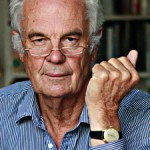A hard fist inside a velvet glove
By Jonathan Power
Despite Ukraine, Syria, Iraq, Libya, Afghanistan, Israel/Palestine and Southern Sudan the world is a lot more peaceful than it was at the end of the Cold War and shows no sign of returning to the bad old days when there were some 25 wars going on every year. Now it is down to about a dozen.
The task today is to keep that number going down – a difficult job when the outbreak of conflict in Syria, Libya and Ukraine have turned the graph upwards a few notches for the first time.
Protagonists in political quarrels tend to push the non-violent activists to one side – as they have done in Syria, Libya, Gaza and Ukraine.
This is not a good tactic as these situations have clearly shown. In Syria whole parts of cities have been reduced to rubble. Likewise in Gaza. In Ukraine this is starting to happen.
In the current issue of Foreign Affairs Erica Chenoweth and Maria Stephan argue that the prospects for civil resistance to bring about political change are commonly undersold.
Research suggests, they say, that between 1900 and 2006 campaigns of nonviolent resistance against authoritarian regimes were twice as likely to succeed as violent movements. Nonviolent resistance also increased the chances that the overthrow of dictatorship would lead to peace and democratic rule. Strikes, marches, sit-ins and boycotts are usually more effective tools than guns and tanks.
Non-violent campaigns have achieved their goals nearly half the time whereas only 20% of violent movements have. Even in South Africa the violent movement organised by a young Nelson Mandela made no great inroads for decades. It was the international disinvestments, boycotting of white businesses and ever increasing disaffection among the black population that compelled the exclusively white government to negotiate.
Even when nonviolent campaigners have failed their countries were four times more likely to become democratic than when protest was headed by violent movements.
Civil resistance, write Chenoweth and Stephan, does not succeed because it melts the hearts of dictators and the secret police. It succeeds because it is more likely than armed struggle to attract a larger and more diverse base of participants and thus impose unsustainable costs on a regime.
Iran’s last shah had little difficulty neutralizing the Islamist and Marxist-inspired guerrilla groups during the 1960s and early 70s. But when large numbers of oil workers, bazaar merchants and students used work stoppages, boycotts and street protests to make their point the repressive apparatus became overstretched and the economy tanked. Western governments withdrew their tacit support. The US made it clear it no longer supported the shah. He had no alternative but to go into exile.
The yoke of dictatorial communism was finally thrown off in Poland when Pope John Paul, a Pole, urged change and made the clergy read out his views at mass, and a movement that began in the shipyards, led by Lech Walesa, calling itself Solidarity, gathered widespread support. It is estimated that 10 million people joined Solidarity. It organised marches, strikes and published newspapers. It undermined the communist party’s morale and gradually eroded the regime’s hold. In the end it was compelled to hold elections in 1989 which it lost by a sizeable margin.
Tunisia is the one clear victor in the “Arab Spring”. It was because all the anti-regime movements obeyed their leaders’ calls to remain non-violent that the transition to democracy has been peaceful, despite the murder of two prominent liberal politicians by hard line Islamists.
In Egypt the protests against the Mubarak dictatorship started well and he was deposed and elections held. But when the electorate voted for someone who the secular-minded protestors didn’t approve of and some of his policies were too Islamist in character they demonstrated again and appealed to the army to overthrow him. The ploy backfired. The army is in the saddle and thousands of protestors languish in jail.
In war-torn Syria the early nonviolent activists failed to coordinate protests across the country which could have mitigated government repression and increased defections (there were some) from the armed forces.
The opposition’s tactics were isolated and improvised – sporadic protests after Friday prayers in the mosques and flash mobs in the crowded markets. The problems were compounded when on the fringe militants first made their appearance and Western television channels switched their attention, giving the militants a definite boost and undermining the morale of the largely peaceful demonstrators.
Nevertheless, if the violent movements in Syria follow precedent the rebels’ future looks bad. The evidence gathered from 1900 to 2006 suggests that violent campaigns have only a 30% chance of success – movements like the genocidal Khmer Rouge in Cambodia (later overthrown by the Vietnamese) and the mujahideen against the Soviet army in Afghanistan (later pushed aside by the Taliban) all came to grief.
Nonviolence is a hard fist in a velvet glove. We need to see more of it not less.
© Jonathan Power 2014
